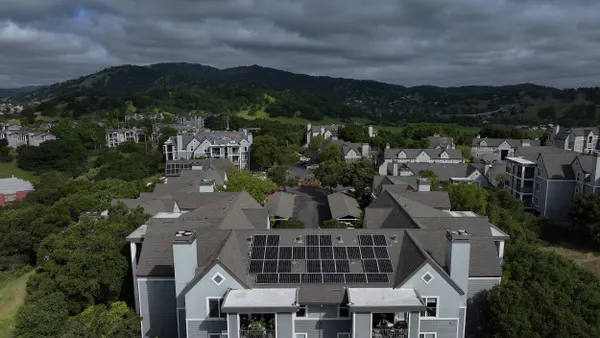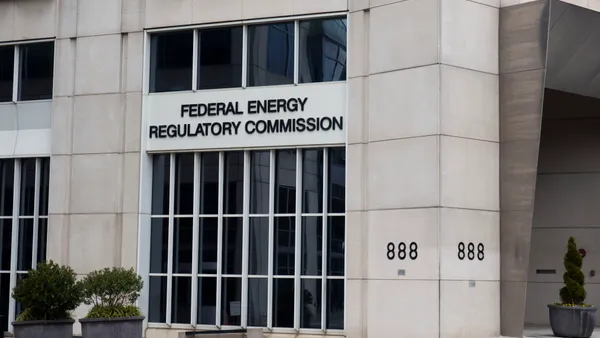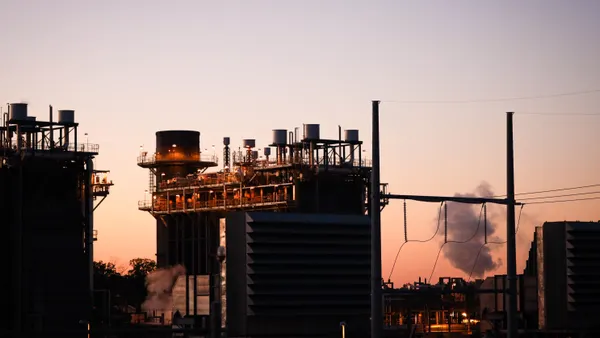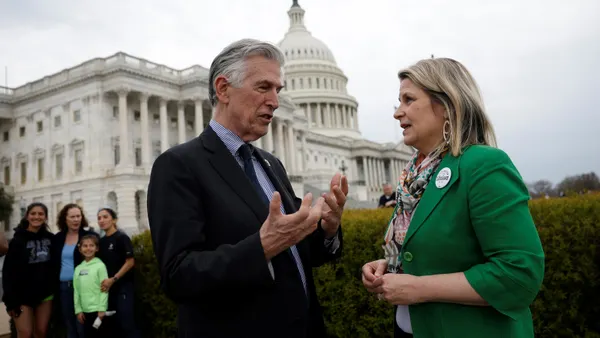UPDATE: Aug. 28, 2020: The California Public Utilities Commission issued a decision Thursday that creates a pathway for utilities to incorporate climate vulnerability assessments into their general rate case cycles, with a special focus on how climate change affects disadvantaged communities in their service territory. Utilities will need to file vulnerability assessments with regulators every four years, and include their exposure to climate risks and ways to manage that, as well as their exposure to risks from third-party power facilities.
Dive Brief:
-
California regulators on Monday issued a proposal to have the state's investor-owned utilities incorporate climate change vulnerability assessments into their general rate case cycles, in an effort to guide infrastructure investments over the long term.
-
If the proposed decision is approved, utilities would need to submit reports on their exposure to temperature, sea level, wildfire and other climate risks, as well as measures to mitigate them, to the California Public Utilities Commission (CPUC) every four years.
-
The proposed decision could lead to "smarter requests" from utilities in their general rate cases, Mohit Chhabra, senior scientist with the Natural Resources Defense Council's climate and clean energy program, told Utility Dive. The assessments would ensure that utilities consider the impact of the natural environment before deciding what infrastructure to build and where.
Dive Insight:
There are three broad ways in which climate risks impact utility services, according to Chhabra: production, consumption and transmission and distribution infrastructure. Renewables are weather-dependent energy sources, so climate change could affect how energy is produced — for instance, changing rain patterns can affect hydroelectric supply — and increasing temperatures could lead to higher energy consumption for cooling needs.
Transmission and distribution infrastructure also faces its fair share of risk — hotter, drier climate increases the odds of wildfires, for instance, and coastal facilities can be vulnerable to sea level rise.
In 2018, the CPUC opened a docket to take a deeper look at how utilities should prepare for the operational risks they will face due to climate change.
"This proceeding is cutting edge in the sense that I think the CPUC is the first regulator across the country to really take the impact of climate change on utility services seriously," Chabbra said.
Under the proposed decision, utilities will file climate vulnerability assessments looking at the effects of temperature changes, sea level rises, changes in rainfall and other climate impacts. The filings will become the basis by which utilities plan infrastructure investments, and prioritize whether to strengthen, move or simply remove generation, transmission and distribution equipment that is vulnerable to climate change.
"This provides consistency across all the places where climate change needs to be considered," Chhabra said, so that utilities are considering climate needs not just when proposing certain upgrades, but also in terms of resource and load planning.
Part of this process includes considering communities that are particularly vulnerable to climate change. The CPUC is recommending that the utilities create "community engagement plans," to outline how they will work with these communities in developing their vulnerability reports, "so the communities are not left behind the rest of the state."
The commission's proposed decision requires the filings to include three timeframes: the next 10 to 20 years, 20 to 30 years and 30 to 50 years — which is unprecedented, as it's a much longer timeframe than the 10-year integrated resource planning process that the CPUC follows, Gregg Morris, director of the Green Power Institute, told Utility Dive.
"The utilities have long-term infrastructure planning … but we're hoping that this will influence [their] thinking about planning for new infrastructure," he said.
Morris noted that one area of climate adaptation utilities were not adequately prepared for is wildfire resilience — while California has always had wildfires, the risk has been growing and changing more recently.
"They really need to get on top of it. Infrastructure is expensive, so it's not a trivial matter to say, for example, you ought to put in covered, protected wires," he said.
The CPUC's proposed decision also requires utilities to submit safety plans for facilities that are part of power purchase agreements.
"[O]ver time, we expect the energy IOUs to move from simply identifying risks of contracted assets in their vulnerability assessments to including substantive risk assessments of third-party contracts in their vulnerability assessments," the proposed decision states.
The proposal would also change how utilities deal with climate risk internally. The IOUs would need to create "climate change teams" that work across departments and report directly to an executive, as well as make their board members take responsibility for their overall climate adaptation processes.
Pacific Gas & Electric is integrating climate data into its strategic risk planning process, company spokesperson Lynsey Paulo told Utility Dive in an emailed statement. The utility published a climate vulnerability assessment in 2016, and is currently initiating a second one.
"We appreciate the CPUC's engagement on this important topic to clarify the expectations and provide guidance on how to increase climate resilience, and are currently reviewing the Proposed Decision," she added.
Southern California Edison is still reviewing the proposed decision and declined to comment at this time.














